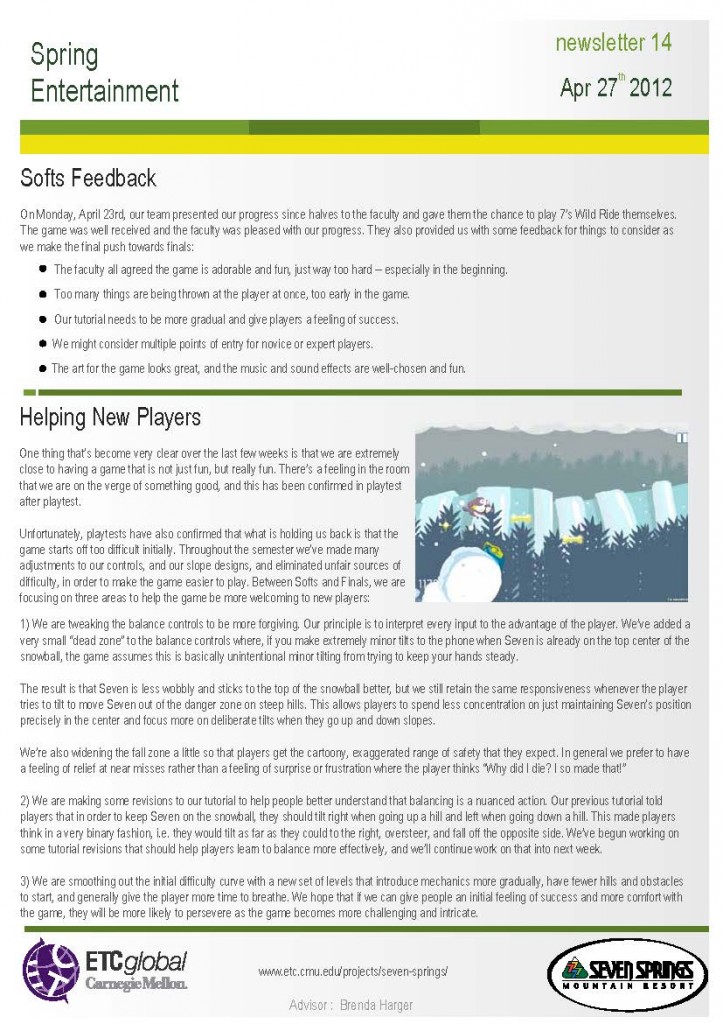Newsletter #14
Softs Feedback
On Monday, April 23rd, our team presented our progress since halves to the faculty and gave them the chance to play 7’s Wild Ride themselves. The game was well received and the faculty was pleased with our progress. They also provided us with some feedback for things to consider as we make the final push towards finals:
- The faculty all agreed the game is adorable and fun, just way too hard — especially in the beginning.
- Too many things are being thrown at the player at once, too early in the game.
- Our tutorial needs to be more gradual and give players a feeling of success.
- We might consider multiple points of entry for novice or expert players.
- The art for the game looks great, and the music and sound effects are well-chosen and fun.
Helping New Players
One thing that’s become very clear over the last few weeks is that we are extremely close to having a game that is not just fun, but really fun. There’s a feeling in the room that we are on the verge of something good, and this has been confirmed in playtest after playtest.
Unfortunately, playtests have also confirmed that what is holding us back is that the game starts off too difficult initially. Throughout the semester we’ve made many adjustments to our controls, and our slope designs, and eliminated unfair sources of difficulty, in order to make the game easier to play. Between Softs and Finals, we are focusing on three areas to help the game be more welcoming to new players:
- We are tweaking the balance controls to be more forgiving. Our principle is to interpret every input to the advantage of the player. We’ve added a very small “dead zone” to the balance controls where, if you make extremely minor tilts to the phone when Seven is already on the top center of the snowball, the game assumes this is basically unintentional minor tilting from trying to keep your hands steady.The result is that Seven is less wobbly and sticks to the top of the snowball better, but we still retain the same responsiveness whenever the player tries to tilt to move Seven out of the danger zone on steep hills. This allows players to spend less concentration on just maintaining Seven’s position precisely in the center and focus more on deliberate tilts when they go up and down slopes.We’re also widening the fall zone a little so that players get the cartoony, exaggerated range of safety that they expect. In general we prefer to have a feeling of relief at near misses rather than a feeling of surprise or frustration where the player thinks “Why did I die? I so made that!”
- The result is that Seven is less wobbly and sticks to the top of the snowball better, but we still retain the same responsiveness whenever the player tries to tilt to move Seven out of the danger zone on steep hills. This allows players to spend less concentration on just maintaining Seven’s position precisely in the center and focus more on deliberate tilts when they go up and down slopes.
- We are smoothing out the initial difficulty curve with a new set of levels that introduce mechanics more gradually, have fewer hills and obstacles to start, and generally give the player more time to breathe. We hope that if we can give people an initial feeling of success and more comfort with the game, they will be more likely to persevere as the game becomes more challenging and intricate.

